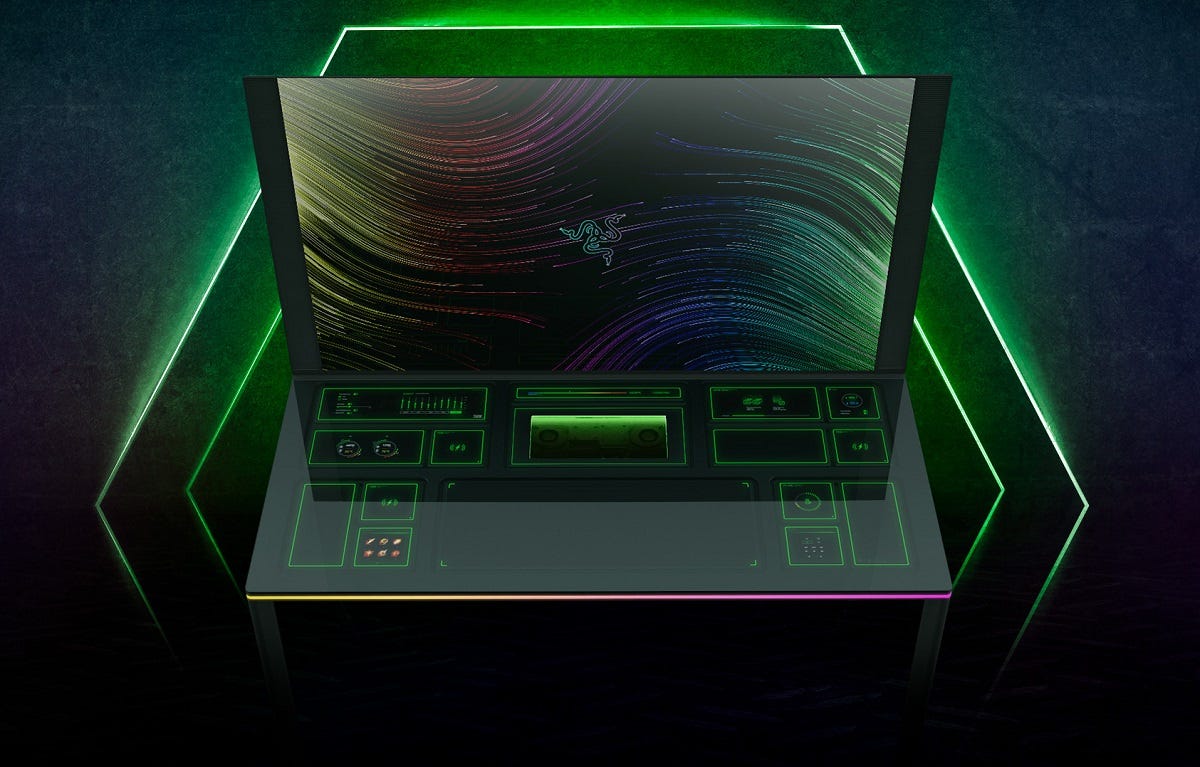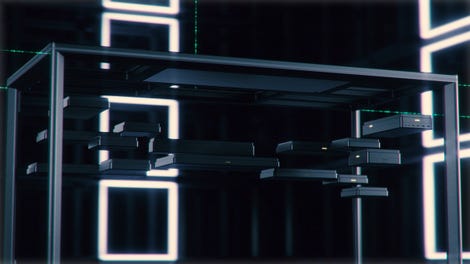

Razer Project Sophia
It’s now a CES tradition for Razer to announce an out-there concept to which it gives a traditionally female name. Past examples include Project Linda, Project Christine, and Project Hazel, amongst others. This year’s model from the gaming company harkens back to the modular PC concept of Project Christine, but with a furniture-based twist.
Dubbed Project Sophia, Razer’s idea is rather than create a modular PC that goes on top of your desk, it instead becomes a part of your desk. The concept begins with a desk with a glass top, which can magnetically connect to a clear chassis below the top. That chassis can hold up to 13 different swappable modules that cover everything from CPUs and GPUs to futuristic supplemental displays and touch-screens. These include a couple that are more potential features of a state-of-the-art desk than a traditional computing: a wireless charging module and even a cup warmer.
Razer says the impetus for Project Sophia is to make switching computer tasks easier; rather than jumping from your workstation to your gaming PC, you can just add modules to your desk/system. While the company references work-related functions as part of the Project Sophia equation, the embedded LED lights in the desk that can be synced with the company’s Chroma RGB system are all need to tell you that gamers are still the target audience. Otherwise the included 65-inch OLED display that goes on top of the desk could seem like extreme overkill for working on email or Microsoft Word.

Given the vaporware results of similar previous Razer projects, this Minority Report vision of a desktop PC as a desktop is highly unlikely to see the light of day as a commercial offering. The cost would presumably be astronomical, though that’s not necessarily a deterrent to the most well-heeled of gamers. There’s also the question of whether the value of modularity is as great as Razer proposes. While some modules like specialized input devices could be swapped in as needed, is there really a need to swap components in and out if, say, you’re working during the day and gaming at night? Especially considering the role of the modern GPU in assisting all kinds of apps, why wouldn’t you build your best configuration and then use what you need over the course of the day?
But going too far down the rabbit hole of practicality misses some of the point to Razer’s moonshot ideas. The vision of a computing future it presents in concepts like Project Sophia is the most important thing, as it can spur improvements on a more everyday basis. Project Christine’s modular PC vision never took off, but the idea that consumers desire an easier way to swap components in a PC has filtered down into a number of designs that inch their way toward modularity. Likewise, the idea of fusing the computer with your office furniture could yield some interesting work in both desktops and desks down the road. Importantly, none of these blue-sky ideations is hurting Razer’s bottom line, as it cites strong customer loyalty as part of its success, a loyalty no doubt fueled in part by the company’s forward thinking as manifested in concepts like Project Sophia.

